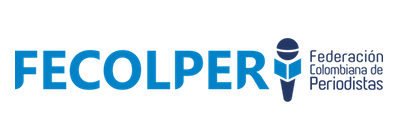Online
Since the commissioning of the Vive Digital plan in 2010, the country’s number of Internet users has multiplied. With 12.5 million unique monthly visits, Colombia today has the fourth largest online audience in Latin America. Colombia’s average visitor online time is also higher than the global average. With an average of 4.3 hours per day, Internet use time has now surpassed that of radio and television (2014 Media Market Report for Latin America—US Media Consulting, 2014).
Colombia’s Alexa ranking shows that Facebook and Google are the most frequently visited pages. The El Tiempo site ranks first among national news media. This reinforces the brand power of this traditional print media. Several independent digital media organizations have arisen over the last six years: La Silla Vacía (2009), KienyKe (2010), Las 2 Orillas (2013), Pulzo (2013). Whilst these have found niche audiences, they have been unable to equal the visitor numbers to the websites of traditional media.
The exact number of digital media in Colombia is difficult to determine. Of the 650 information portals existing in 2012, some 489 produced tailored material for their site, while the remainder copied the original print version to their site. Some 306 digital media natives were also identified (Digital Media Study, UPJ 2012).
Key facts
- Service commencement year: 1994
- Number of broadband connections: 10,112,622 (MINTIC, 2015)
- Number of users: 53 of every 100 Colombians use the Internet.
Internet history
The Internet began in Colombia in 1994. This coincided with the boom in drug trafficking and a political crisis. Development of digital media services and narratives was slow for the first ten years. Between 2006 and 2008 web natives began to proliferate, coinciding with significant growth in the number of Colombians using the Internet. The most recent Consumo Cultural (Cultural Consumption) survey, which asked Colombians about their reading and information consumption habits, found that most people are “reading” on digital platforms: 87% claimed to do so on social networks; 82% through email, and; 70% on blogs, forums and/or web pages. By comparison, 19% claim to read newspapers and 16% say they read books and magazines. According to a study undertaken by Semiocast, Colombia ranked 12th for number of Twitter accounts. Another study reported that Colombians publish more than 920,000 tweets per week—an average of nine messages per second.
Media Selection
The digital media chosen for thorough investigation by MOM are listed below. The choice was based on the volume of visits to the page (according to Alexa.com), the contents of the media (the presence of informative content, debate, or opinion), and its relevance in the public sphere. These criteria exclude sporting, entertainment, and musical content, as well as social networks.
Detailed information is found by clicking to the logo of each media organization.














